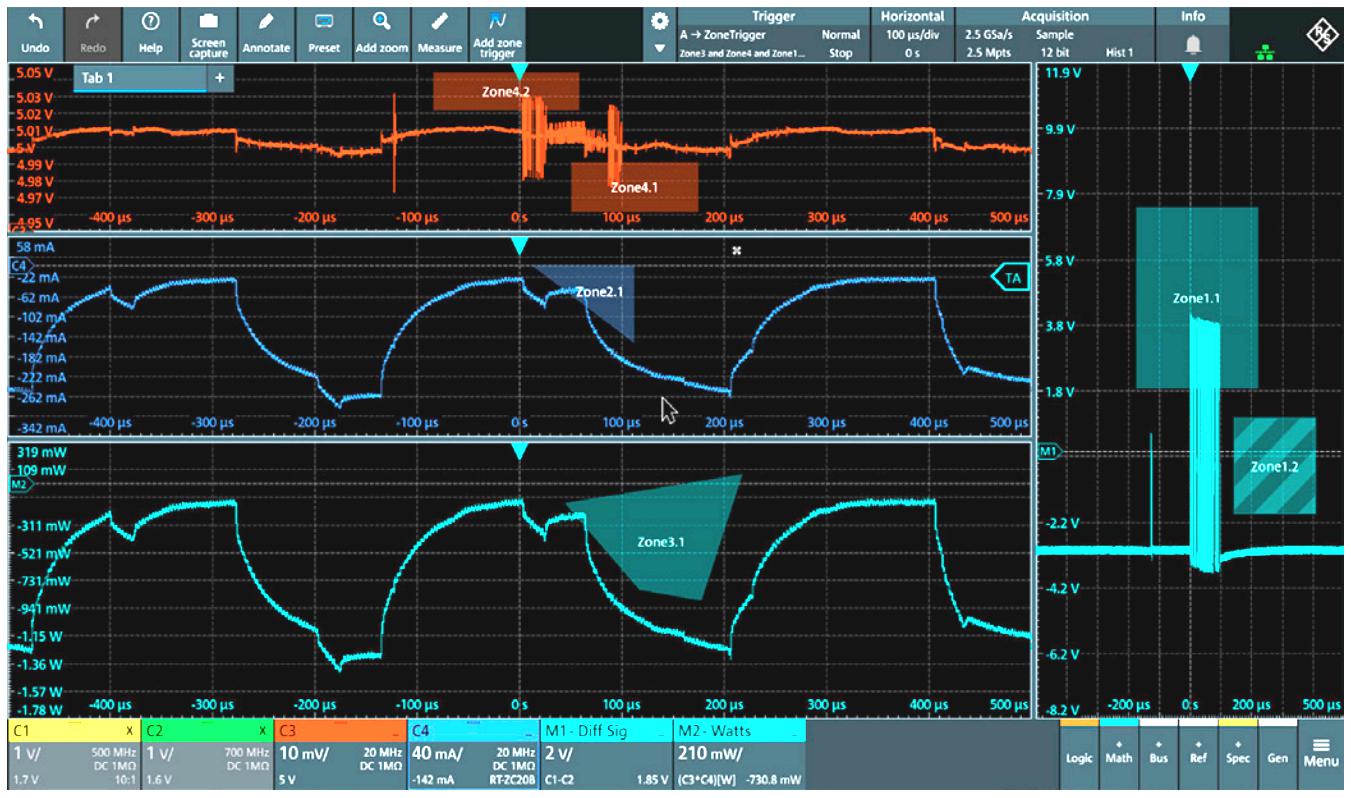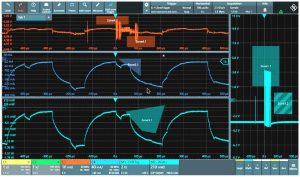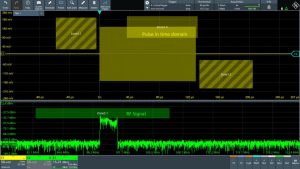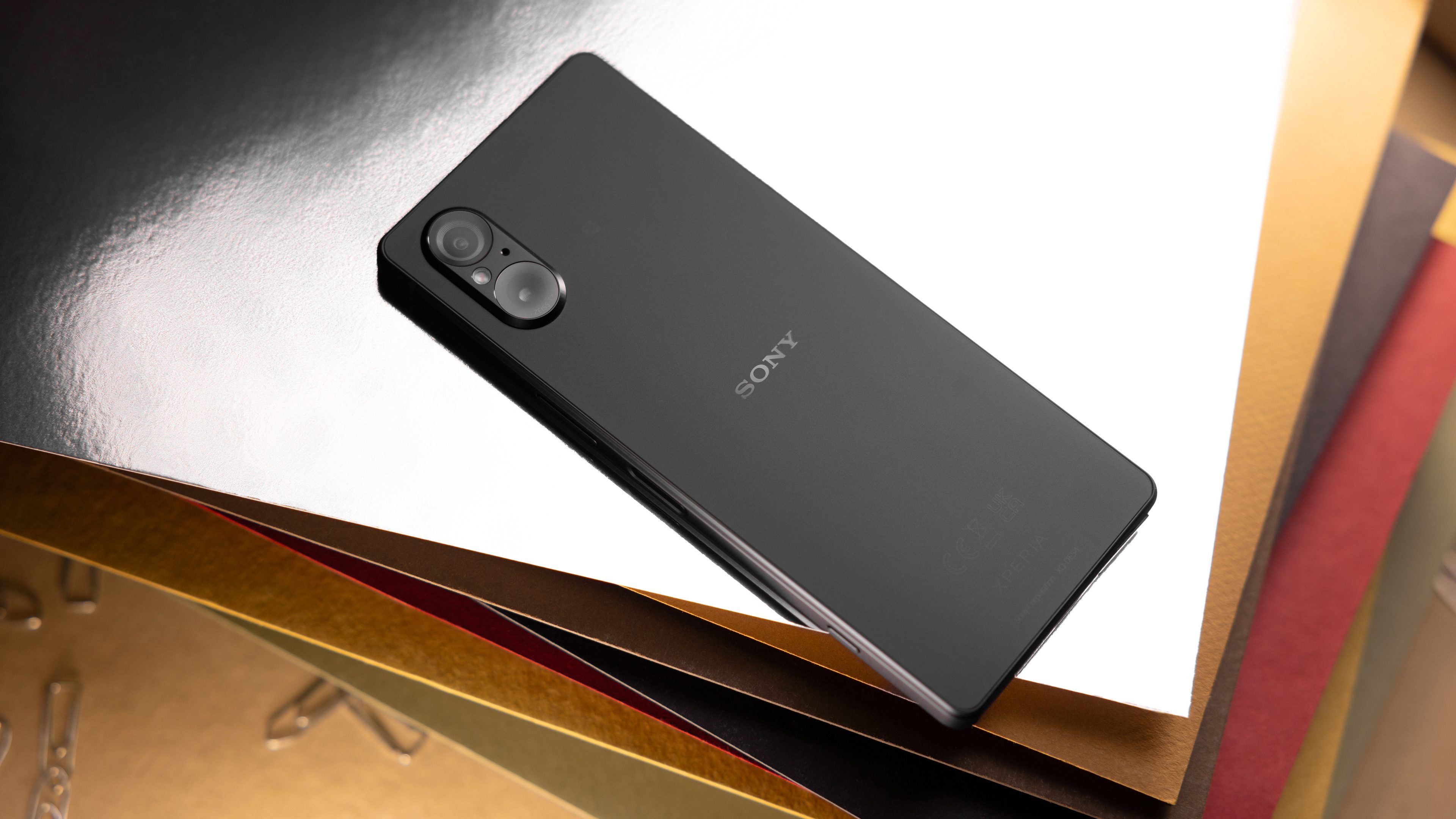
Zone triggering allows users to specify trigger conditions by drawing one or more zone areas on the instrument’s display.
Each acquisition is then inspected for these conditions, and displayed if it meets them. Otherwise it is discarded.
Zone triggering on a specific RF chirp length in the time domain, and when the chirp exceeds a certain power level in the frequency domain.
“Zone triggering can be very effective for triggering on non-monotonic edges, serial bus patterns, math waveforms, events across multiple channels and events in the frequency domain. For these use cases traditional oscilloscope triggers simply do not work,” according to the company. It “enhances the oscilloscopes’ ability to precisely isolate events that are difficult or impossible to detect with traditional oscilloscope triggers”.
The asic, called MXO-EP, is include in R&S’ MXO 4, MXO 5 and MXO 5C scope ranges, ASIC-based solution that works on analogue channel signals, math and spectrum.
In these, the user defined up to four zones by drawing on the display. These can be drawn over input channel waveforms, maths waveforms (including power analysis waveforms) and frequency spectra.

Triggering can be on areas intersecting, or areas not intersecting. The relation of zones to cause a trigger can be defined by Boolean expressions. Zone trigger ca be combined with edge, glitch, width, runt, window, timeout, interval, slew rate and other forms of trigger.
“Users testing and debugging in the frequency domain using an oscilloscope can now draw specific zone areas. The oscilloscope will then trigger or activate when a certain tone exceeds a set power level within these zones,” said R&S. “Or users can simply draw a zone for RF chirps or pulses. New, is free run mode, where the oscilloscope captures as fast as possible without looking for an edge trigger event. Combining this with zone triggering can be very effective for power integrity measurements and EMI debug.”
Zone triggering is enabled in version 2.2 firmware, which is a free download. “The chip design was laid out to have further hardware acceleration capabilities enabled down the road,” said R&S v-p of oscilloscopes Philip Diegmann.







